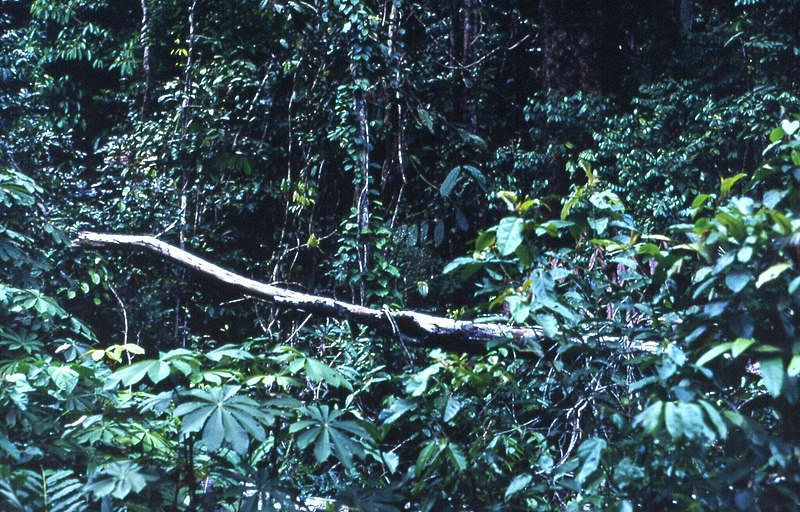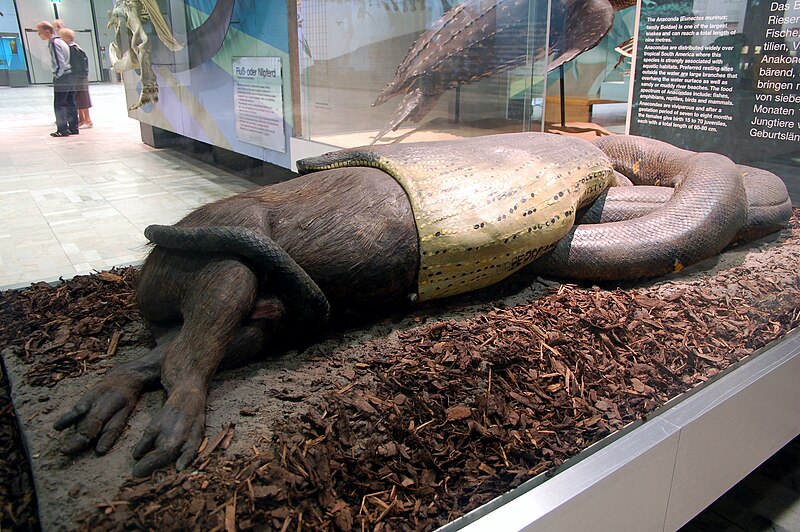 Many of the most interesting reptile field research reports are published in professional journals such as Copeia, Herpetologica and Herpetological Review, and are not available on the Internet. From time to time I’ll provide summaries of some of the fascinating articles that I come across. Today’s report covers Spring, 2010 publications: Common Snapping Turtles (Chelydra serpentina), Texas Horned Lizards (Phrynosoma cornuta), Italian Wall Lizards (Podarcis siculus) and Eastern Kingsnakes (Lampropeltis getula). Read More »
Many of the most interesting reptile field research reports are published in professional journals such as Copeia, Herpetologica and Herpetological Review, and are not available on the Internet. From time to time I’ll provide summaries of some of the fascinating articles that I come across. Today’s report covers Spring, 2010 publications: Common Snapping Turtles (Chelydra serpentina), Texas Horned Lizards (Phrynosoma cornuta), Italian Wall Lizards (Podarcis siculus) and Eastern Kingsnakes (Lampropeltis getula). Read More »
Monthly Archives: August 2010
The Natural History and Captive Care of the Fire Skink
In my opinion, the aptly-named Fire Skink, Mochlus (formerly Riopa) fernandi, is one of the most strikingly-colored and interesting of all lizards. It is not overly popular, due to a rather shy nature, and hence prices are very reasonable, especially for such a gorgeous animal. The challenge of creating a habitat where these forest-dwellers will feel comfortable enough to show themselves is well-worth taking, trust me.
Description
This glossy, 12-14 inch-long lizard is colored bright red with black and white stripes along the sides, and marked with a golden-brown back stripe; the legs are black and the tail is blue-black, speckled with blue.
Range
 The range spans Central Africa, from Guinea to Kenya and south to Angola.
The range spans Central Africa, from Guinea to Kenya and south to Angola.
Habitat
Fire Skinks favor rainforests, open woodlands and scrub along the edges of grasslands. They spend most of their time below leaf litter, but bask regularly.
Status
Largely unstudied – populations appear stable, but are likely impacted by de-forestation; the species is unprotected.
Reproduction
Little is known of the Fire Skink’s reproductive biology in the wild. Captives produce 4-9 eggs, which are buried in moist substrate and hatch in approximately 50 days. Males are territorial and fight if housed together.
Diet
Snails, spiders, centipedes, beetles, locusts and other invertebrates; fallen fruit, carrion, frogs, lizards; may take nestling rodents and other small mammals on occasion.
Captive Care
This lizard is extremely alert and high strung. It does well in captivity, but rarely allows close contact or even extended observation, and remains cautious even after years in confinement.
I’ve had my best results with terrariums of at least 55 gallons capacity (for 1-2 animals) and large zoo exhibits. If you spend time creating a complex, well-planted exhibit, you will eventually be rewarded by being able to view the skinks as they forage and bask. The sight of such brilliantly-colored reptiles moving about among thick stands of live plants makes the effort well worthwhile.
Captive longevity exceeds 20 years. I’ve bred Fire Skinks on several occasions; males and females usually coexist only during the breeding season.
Further Reading
The Fire Skink’s 1,200+ relatives make up the largest lizard family; please see my Skink Overview for more info.
Video of a Fire Skink feeding
The Green Anaconda – Natural History of the World’s Largest Snake
 In part 1 of this article we’ll examine the natural history of this heaviest and possibly longest of all snakes. The Green Anaconda (Eunectes murinus) has generated a great many stories – through field research, I’ve had several opportunities to ferret out some interesting details behind these (please see article referenced below). The second half of this article will take a look at the astonishing array of creatures it is known to consume.
In part 1 of this article we’ll examine the natural history of this heaviest and possibly longest of all snakes. The Green Anaconda (Eunectes murinus) has generated a great many stories – through field research, I’ve had several opportunities to ferret out some interesting details behind these (please see article referenced below). The second half of this article will take a look at the astonishing array of creatures it is known to consume.
Green Anaconda Description
A stout animal that may exceed 400 pounds in weight, this is the world’s heaviest snake. It vies with the Reticulated Python for the title of longest serpent.
In the past, 25-foot-long animals were encountered, but an individual approaching 20 feet is considered large today. There is a fairly reliable record of a 33-foot-long Green Anaconda; an unverified field report from Eastern Columbia (1944) claims an individual of 37.5 feet. In the course of tagging over 500 specimens, the largest I and my co-workers encountered in Western Venezuela was just over 17 feet long and tipped the scale at 215 pounds.
Wild males rarely exceed 12 feet in length, and are thinly built. A captive male under my care was, however, as heavily built as any female and measured in excess of 15 feet; colleagues report similar experiences.
The dorsal surface is dark green, olive or grayish-green and marked with irregular black blotches. The ventral surface is yellow with black blotches. The eyes and nostrils are dorsally located, an adaptation to the largely aquatic lifestyle.
Range
Trinidad and much of tropical South America east of the Andes – Venezuela, Columbia, Brazil, Northern Bolivia, Northeastern Peru, Guyana and French Guiana.
Habitat
Green Anacondas are almost completely aquatic and rarely stray far from water. They inhabit rivers, swamps, lakes and flooded grasslands.
Status
 Status is difficult to ascertain due to the nature of the habitat, but declines have been documented; listed on CITES Appendix II.
Status is difficult to ascertain due to the nature of the habitat, but declines have been documented; listed on CITES Appendix II.
Feared and often killed when encountered, Green Anacondas are hunted in some areas for their skin and fat (believed to be of medicinal value). They are also threatened by the expansion of farms and ranches.
Longevity
Captives have lived in excess of 31 years; unknown in the wild
Reproduction
Several males (2-12) coil about a single female, drawn by the pheromones she releases. Spurs alongside the cloaca are rubbed against the female to help elicit copulation. Successful males may introduce a waxy plug into the cloaca in an attempt to assure paternity.
Green Anacondas give birth to 10-100 live young after a gestation period of approximately 6 months. The size and number of young are related to the size and health of the mother. Examples from animals under my care: a 20-foot-long female gave birth to 50 young averaging 3 feet in length; a 13-footer produced a dozen youngsters averaging 24 inches.
Gravid females bask far more frequently than do others, and may consume the fetal membrane and infertile eggs passed with the young. Newborn Green Anacondas are secretive and rarely seen; little is known of their natural history.
Green Anacondas – A Most Varied Diet
Green Anacondas take a wider range of animals than most, if not all, other snakes. Documented prey species include young tapir, capybara, sheep, dogs, domestic pigs, white-tailed deer, agoutis, peccaries, turtles, tegus, caimans, other anacondas, frogs, herons, ducks, fishes and, possibly, people. Anacondas are constrictors – prey is killed by suffocation (lung compression) and heart failure (pressure on the heart, veins and arteries).
While conducting field research in Venezuela, I several times encountered Anacondas consuming large prey items, including a 60 pound white-tailed deer, a 5-foot-long spectacled caiman and a large side-necked turtle.
An (happily unsuccessful!) attack on a co-worker was almost certainly a feeding response and not defense-oriented.
Dangers from Predators and Prey
Young Anacondas are eaten by wading birds, tegus, caimans, turtles, other Anacondas and similarly-sized predators; there are reports of jaguars and pumas attacking sub-adult animals.
Large adults have no known predators other than people, but often bear injuries received in overcoming caiman, capybaras, deer and other large animals. Most of the large Anacondas that I handled bore wounds and evidence of broken ribs. I also noted what appeared to be bite marks from piranha on several snakes…and 1 person! One Anaconda was found with mouth wounds sustained while attempting to consume a side-necked turtle. This snake later died, possibly due to an infection.
Zoo Diets
Typical food items include rats, guinea pigs, rabbits, ducks, chickens, fish and pigs of 15-25 pounds in weight.
Captive Anacondas sometimes exhibit very distinct food preferences (often duck), and will refuse all but their favored prey. I cared for one individual that would eat wild-caught but not lab-raised Norway rats and another that refused all but muskrats.
People as Snake Prey
Wild Green Anacondas have, as I observed, attacked people and actual predation is suspected. The snakes reliably known to have consumed people are the Reticulated Python, Python reticulatus, the African Rock Python, Python sebae, and, possibly, the Burmese Python, Python molurus. I’m aware of several instances in which captive Burmese Pythons have killed their owners.
Giant Meals for Giants
 The largest prey item consumed by a captive snake seems to be a 130 pound impala antelope fed to a Reticulated Python. The largest meal taken by an Anaconda appears to be a 100 pound peccary consumed by a 26’9” specimen in French Guiana.
The largest prey item consumed by a captive snake seems to be a 130 pound impala antelope fed to a Reticulated Python. The largest meal taken by an Anaconda appears to be a 100 pound peccary consumed by a 26’9” specimen in French Guiana.
The 60 pound deer consumed by an Anaconda that I captured in Venezuela likely represents the upper size limit of prey for specimens of 17 feet or so in length. A 22-foot-long wild-caught Reticulated Python under my care regularly consumed 30-40 pound pigs, but I preferred offering animals in the 20 pound range.
Further Reading
You can read more about the research mentioned above in these articles:
Hunting Anacondas in the Venezuelan Llanos.
Big Snake Meals – records of large and unusual meals.
Field research reports and summaries.
Anaconda Expert Wades Barefoot in Venezuela’s Swamps
National Geographic Video of an Anaconda capturing a Capybara.
Please write in with your questions and comments.
Thanks, until next time,
Frank Indiviglio
Anaconda eating Capybara display Frankfurt Museum image referenced from wikipedia and originally posted by EvaK
Green Anaconda image referenced from wikipedia and originally posted by LtShears
Phorid or Scuttle Flies – A Common Pest in Herp and Invertebrate Collections – Part 2
 Phorid Flies, also known as Scuttle Flies or Humpbacked Flies, often show up in terrariums housing reptiles, amphibians and invertebrates. Usually confused with Fruit Flies, these little pests feed upon meat-based foods and organic waste and are classified in the 4,000+ member insect family Phoridae. The most commonly encountered species in US collections is Megacelia scalaris, and an outbreak can range from a mere annoyance to a serious problem. Please see Part 1 of this article for further information. Today we’ll examine some simple methods of controlling these and related flies. Read More »
Phorid Flies, also known as Scuttle Flies or Humpbacked Flies, often show up in terrariums housing reptiles, amphibians and invertebrates. Usually confused with Fruit Flies, these little pests feed upon meat-based foods and organic waste and are classified in the 4,000+ member insect family Phoridae. The most commonly encountered species in US collections is Megacelia scalaris, and an outbreak can range from a mere annoyance to a serious problem. Please see Part 1 of this article for further information. Today we’ll examine some simple methods of controlling these and related flies. Read More »
Lizard Breeding Made Easy – The Live Bearing Swifts or Spiny Lizards – Part 1

 That Reptile Blog – Reptile, Amphibian and Exotic Pet Care and Information
That Reptile Blog – Reptile, Amphibian and Exotic Pet Care and Information
